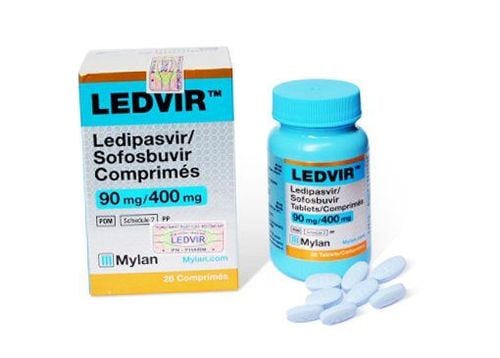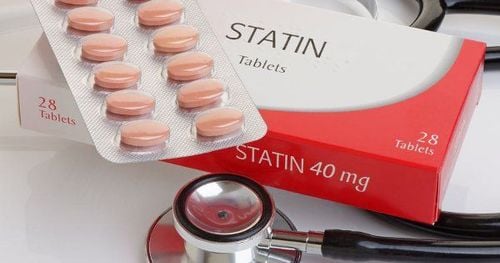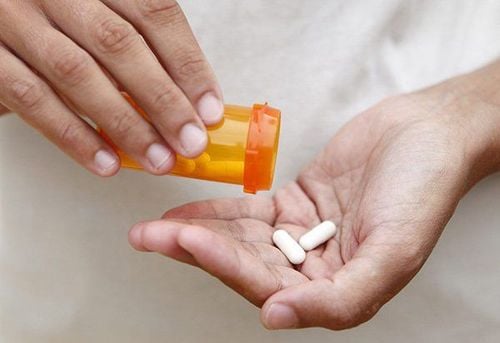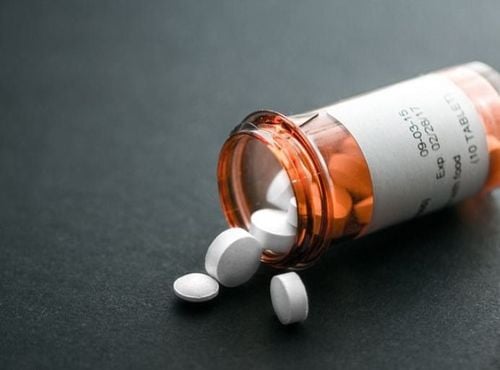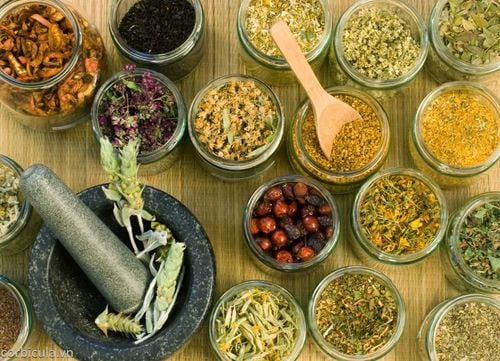This is an automatically translated article.
Solanum procumbens, also known as thorny thorns, nightshades, eggplants, and cows, has the scientific name Solanum procumbens, belonging to the family Solanaceae. This plant is often grown widely in the northern and central provinces of Vietnam. Learn about the uses and how to use hemp through the article below.1. What is prickly pear?
The prickly pear belongs to the species of small climbing plant, divided into many branches, with an average length of 60-100 cm. The leaves are green, alternate, ovate or oblong, at the base of the leaves ax-shaped or slightly rounded, the underside of the leaves is star-shaped with soft hairs, white but not rough, the upper surface of the leaves. thorny. It flowers from April to September and bears fruit in September to December.
The plant produces berries, glossy, red, spherical, the diameter of the fruit ranges from 7 to 9 mm. Seeds pale yellow, kidney-shaped disc, size 3 x 2 mm. For the type of prickly pear with many thorns, there will be spreading branches. The prickly pear is a plant that is considered a medicinal plant with a slightly bitter taste, warm nature, and has the best liver detoxification effect today. The prickly pear is a precious male medicine recognized by Traditional Medicine for its effects on stabilizing liver cells and enhancing liver function. Today, Modern Medicine has researched and proven that prickly pear has valuable active ingredients for the liver. In particular, this drug is very effective in supporting the treatment of hepatitis B. Hibiscus is one of the few medicinal herbs with good effects for patients with hepatitis B (The plant is particularly noted for its effectiveness in supporting the treatment of hepatitis B because the plant contains active Today, scientists have discovered that after only 6 to 8 months of continuous use of hemp juice, the disease can turn negative.)
The way to classify the thorns is also very rich:
Based on the color of the lilacs, people are divided into two types, which are white flowers and purple flowers. In which, white-flowered prickly pear with smaller strings is used a lot in the pharmaceutical industry to process medicines, while purple flowers with large strings are used less often and are mainly grown by people for making goods. fence. Depending on the region, people divide the prickly pear into two types: the Central vine with barren stems, very sturdy ground brown color, the Northern and Southern thorns are often green, plump, and easy to grow. and easy to take care of. Based on the characteristics, it can be classified into dried and fresh thorns. The plant contains a number of important chemical components such as: Flavonoids, saponins, sterols, amino acids, alkaloids,... At the same time, the leaves and roots have many medicinal properties to support human health such as: : Solamnia A, Solamnia B, glycoalkaloid, cholesterol, 3beta hydroxy 5 alpha pregnan 16 on, dihydro lanosterol... Therefore, prickly pear has many therapeutic uses.
2. Uses and how to use prickly pear
As mentioned above, prickly pear has many health benefits for each of us. The part that is most often used to cure diseases is the root (like the family root), the cord (like the family tree). Roots, twigs and whole fruits, collected all year round, washed, finely chopped, dried or dried for sharp drinking or can also be used when fresh.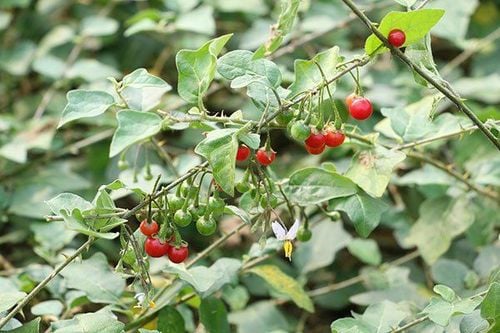
Cà gai leo có công dụng tuyệt vời với sức khỏe người bệnh
The main chemical composition of the plant has alkaloids, starches, flavonoids in the roots, and alkaloids in the roots. The plant is used to treat rheumatism, tooth decay, pain in tendons and bones, flu, cough, whooping cough, allergies. Also used to treat venomous snake bites, detoxify alcohol, beer, prevent motion sickness. Currently, prickly pear has been researched and proven to be effective in treating viral hepatitis, cirrhosis and supporting the treatment of liver cancer. Daily use 16 - 20 g in the form of a decoction.
A number of research studies on the use of prickly pear have given very good results in making medicines for hepatitis, especially active chronic hepatitis B. This is a very promising direction when this medicine is often too expensive and has many side effects. In addition, the plant also has the effect of quickly reducing the clinical symptoms of fatigue, pain in the right lower quadrant, yellow urine, yellow skin and mucous membranes ... At the same time, the drug does not cause unwanted effects on experimental and clinical. It has also been studied and proven to be effective in the treatment of viral hepatitis, cirrhosis and liver cancer.
The active ingredients in the plant and especially glycoalkaloids have the effect of slowing down the progression of fiber and reducing the level of early fiber. Two scientific research works from 1987 to 2000 of the Central Institute of Medicinal Materials were "Study on the inhibitory effect on the fibrosis process of Hicchini on an experimentally induced cirrhosis model" and "Research on the use of on collagenase of prickly pear", it was announced that prickly pear is a medicinal herb that has a significant effect on preventing cirrhosis of the liver. In addition, it contains many other studies that prove this.
The whole extract from the prickly pear plant has a very good antioxidant effect. It is also anti-inflammatory, reduces oxidative damage in the liver, and protects the liver. In the study of Dr. Nguyen Thi Bich Thu and her colleagues about Hibiscus have announced that the whole extracts from the plant and Glycoalcaloids have significant antioxidant effects of 47.5% and 38.1%, respectively.
Extract of prickly pear has also been shown to inhibit some viral cancer cell lines such as liver cancer cells (Hep 3B, PLC/PRF), cervical cancer... In addition , it also inhibits viral oncogenes. And there are many other scientific studies that have proven that prickly pear is very effective in treating liver disease. Cauliflower helps to stimulate the regeneration of liver cells, has a strong anti-inflammatory effect, and lowers liver enzymes very well. From the above research results, it can be seen that prickly pear is one of the herbs that have been studied intensively and methodically with the effects of supporting the treatment of hepatitis, preventing cirrhosis from progressing, and lowering liver enzymes. , detoxifies and protects the liver very effectively.
Oriental medicine believes that prickly pear has a slightly bitter taste, warm properties, slightly toxic, has the effect of dispersing rheumatism, back pain, bone pain, detoxifying, sputum, except cough, pain relief, hemostasis, snake treatment Toxic bite, hepatitis, cirrhosis, fatty liver. Commonly used remedies from prickly pear include:
Cure hepatitis, cirrhosis, support against cancer-causing cells: 30g fenugreek (stem, roots, leaves) 30g, 10g periwinkle, dog tree serrated (Diep Ha Chau) 10g. All yellow stars, drink a daily ladder. Treatment of low back pain, back pain, aches and pains: 10g prickly pear, 10g brocade rope, 10g ground cloth, 10g blood millet, 10g guise leaves. Gold star, color drink on 1 month. Continuous from 10 to 30 ladders. Cure whooping cough, asthma: 10g prickly pear, 10g in Thien Mon, 10g in the heart of the hippocampus. Sac day 1 scale divided by 3. Remedies used to treat colds, allergies, whooping cough, back pain, bone pain, rheumatism, snakebite: Dosage 16 - 20g of root or stem of bitter gourd leaves to drink daily . Making alcohol: According to experience, prickly pear is used to treat alcohol poisoning very well. 100g of dried bitter gourd with 400ml of water to 150ml, drink during the day, should be taken while the medicine is still warm. Or 50g of dried prickly pear with boiling water, for drunk people to drink instead of water. Use until sober. Cure cough due to sore throat: Root or stem and leaves of prickly pear 15g, lemon leaves 30g, decoction drink twice a day. Drink while the medicine is still warm. Use for 5-7 days. Support treatment of liver diseases (hepatitis B, cirrhosis...): 35g of prickly pear root or stem with 1 liter of water, and 300ml divided and taken 3 times a day, helping to lower liver enzymes, and Very good liver detox. For patients with hepatitis B, patients who are receiving antiretroviral therapy but have not been effective, people with high liver enzymes, blood lipids, patients with cirrhosis, liver tumors, impaired liver function due to many causes , people who are often exposed to alcohol and want to use hemp properly should apply:
Daily use 40 grams of boiling water or excellent drink.
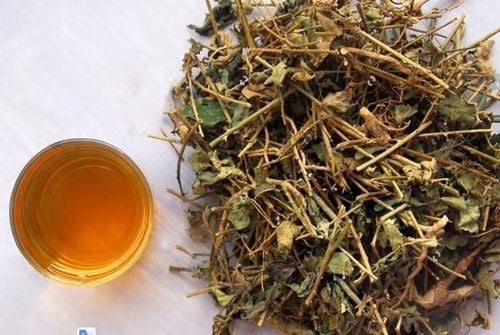
Sử dụng cà gai leo hãm nước sôi đun
Can be combined with nectarine and thyme with the dosage:
Hawthorn vine: 30 grams Honeysuckle: 10 grams Thyme: 30 grams The herbs are washed, then decoction or braked with 1.5 liters water, bring to a boil over low heat and maintain the simmering time for an additional 10 minutes. Drink water during the day (Should drink hot, the taste will be more delicious).
Some things to keep in mind when using herbal medicine to treat liver disease:
The origin of the drug needs to be checked carefully: Supply of medicinal herbs should be strictly controlled, in terms of quality and origin. origin... Confused between the same varieties. As a family, it is possible to confuse nightshade with nightshade, especially for those without expertise and after the medicinal herbs have been preliminarily processed... If the drug is not of good quality, it will cause problems. For the use of prickly pear not only is not effective, but it can also cause poisoning, burden the liver, make the condition worse, it is necessary to consult a doctor for medication.
Among the precious medicinal herbs that are beneficial in the care and protection of the liver, prickly pear is classified as the leading medicinal group. Since ancient times, our forefathers have known to use the roots and stems of the prickly pear plant to treat liver diseases, weak liver, and rashes. Not only that, prickly pear is also used to purify and detoxify the body. Normally, people often use the roots and stems of this plant to dry, then decoction the water to drink in cases of jaundice, abdominal distension, fatigue, drunkenness...
Please dial HOTLINE for more information or register for an appointment HERE. Download MyVinmec app to make appointments faster and to manage your bookings easily.




